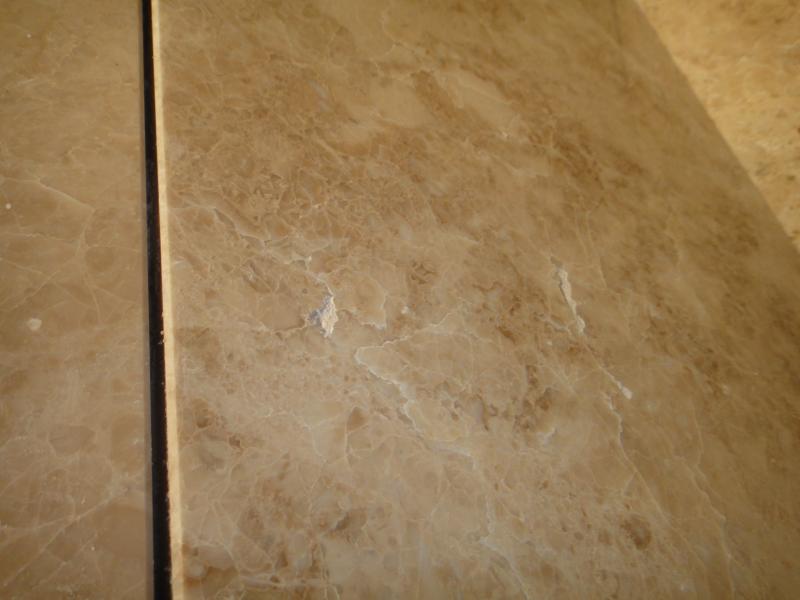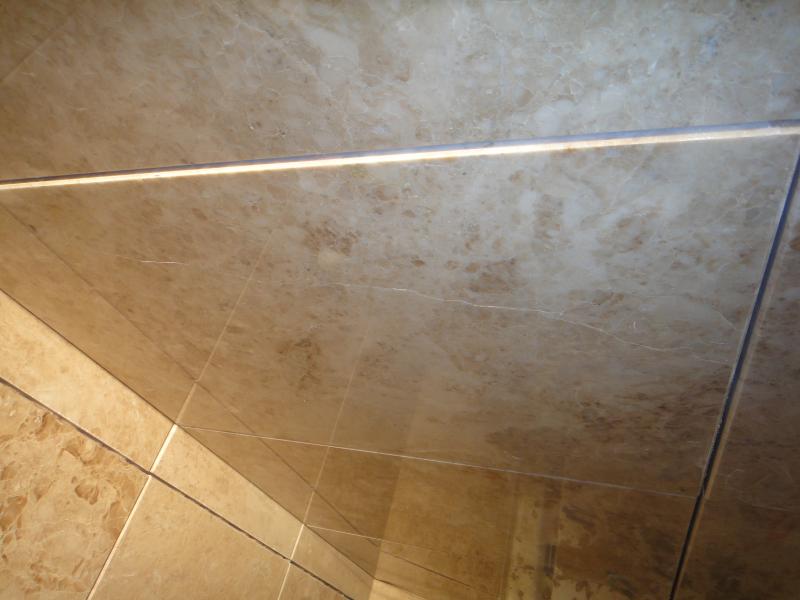Have just put marble tiles for a shower. Hasn't come out perfect but not too bad and it's my first ever tiling job.
- One tile has some quite bad chips in it (max 3-4mm deep), just didn't notice before it went on the wall. Should I just seal it and live with it, or should I fill it with grout, or something else?
- One tile I pushed on too hard to try to get it level and there's a hairline crack appeared through the polished surface. It's not deep and I think it would probably seal up, but can I polish it down any way without professional polishing equipment?
- I'd like to make a feature of the visible edges, I've found giving them a rub with fine grit sandpaper seems to help, but any better ideas?
Thanks.
- One tile has some quite bad chips in it (max 3-4mm deep), just didn't notice before it went on the wall. Should I just seal it and live with it, or should I fill it with grout, or something else?
- One tile I pushed on too hard to try to get it level and there's a hairline crack appeared through the polished surface. It's not deep and I think it would probably seal up, but can I polish it down any way without professional polishing equipment?
- I'd like to make a feature of the visible edges, I've found giving them a rub with fine grit sandpaper seems to help, but any better ideas?
Thanks.



